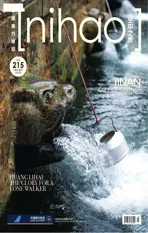书院春秋
2017-04-26
书院春秋
LEGENDS OF ANCIENT ACADEMIES
Over a century ago, there was once a cluster of academies (or Shu Yuan) in the Yuexiu area at the heart of Guangzhou. Centred on the Guangzhou State Office, there were hundreds of academies within the radius of 3.2 km in the late Qing Dynasty. Few academies can be found now, but the heritage of learning passes down from generation to generation and this region remains to be a favourable location for students with rich academic resources.

Compiled by Linda Translation by Sonia Photos by Nipic Illustration by Hao Lun

There were levels of schools in ancient China, such as Guo Zi Jian (imperial college), Zhou Xue (state school), Xian Xue (county school), Xiang Xue (town school), Yi Xue (free school), and She Xue (community school) in the Qing Dynasty. None of these names, however, is as elegant as Shu Yuan (literally “courtyard of books”): at the sight of the name, one feels like being in a yard of red brick walls and green roof tiles, with streams flowing by the doors. Looking through the windows, students are reading quietly at desks, surrounded by walls of books. Wind chimes jingle outside the windows, and recitation sound echoes inside. The students learn earnestly from the teachers and from one another. This is probably a dream place for all scholars.
Statistics show that in the Song Dynasty the number of Shu Yuan in the Pearl River region made 21% of the sum of the whole country. By the Qing Dynasty, the number of Shu Yuan in Guangzhou rose to the greatest nationwide. In Yuexiu old town area alone, there were as many as hundreds of Shu Yuan. It is phenomenal even around the nation that so many Shu Yuans were gathering in such a small place.
In the prime of Kangxi-Yongzheng-Qianlong reigns, on the long streets Da Ma Zhan and Xiao Ma Zhan in Guangzhou, a huge group of academies led by Yuexiu Academy was gradually formed, followed by Yuehua Academy (provincial), Yangcheng Academy (state level), Yushan Academy (county level), Xihulu Academy (county level), and Lujiang Academy (clan owned) among others. These schools became the nest of talents in the Lingnan region (south of the five ridges) and the roots of flourishing culture, education, and academic research at Lingnan during the late Qing Dynasty. After that, Xuehaitang, Jupo, and Yingyuan academies established in the Daoguang-Tongzi reigns took the academic development in Guangdong Province to its peak. Yingyuan Academy was an equivalent of an institute for Ju Rens - provincial graduates; number one and two, and dozens of Promoted Scholars selected from the Imperial Civil Examination were cultivated here. Xuehaitang and Jupo academies were equivalents of professional doctoral graduate institutions, where many famous scholars (such as Chang Wei and Chen Li) and numerous influential political figures in the late Qing Dynasty (such as Liang Dingfen, Tang Zongjun, and Liang Qichao) received their education.
What Shu Yuan did was more than passing down the knowledge of the books; it was the place of fostering the students' morale. The great achievement of humanity, integrity, and culture can only be acquired through the balance of the virtues between the mortal and heaven. This is the most significant ideal in Chinese traditional education.
Walking on the old Yuexiu Academic Street today, there are only eight left out of the hundreds in the prime time: Lujiang Academy, Kaoting Academy, Zheng Clan's Academy, Guanying Family School, Jiangdu Academy, Xie Clan's Academy, Lianxi Academy and Jianda Academy. Most of the old buildings were reformed to private residences due to historical reasons, buried under the everyday life. Recently, dedications towards restoration of the cluster of academies around this area have been raised. Through the demonstration of historic relics and artwork, efforts are made to reproduce the old days of Shu Yuan in the Qing Dynasty, in hope of retaining a city's scholarly memories for Guangzhou, an ancient cultural centre in South China.
百多年前,在广州中心的越秀区,曾出现过威震一时的书院群。以广州府衙为中心,区区方圆3.2公里之内,数百家书院云集。风雨沧桑,如今这些书院已难觅踪影,但书香代代传承,此地依然学风浓郁。
古代的学校有很多种,诸如“国子监”“州学”“县学”“乡学”“义学”“社学”等,但没有一种名称,能像“书院”这么典雅,让人一看见它的名字,仿佛已置身于一个红墙绿瓦的院子里,春水绕门,窗明几净,四壁是满满的书籍,窗外风铃丁丁,窗内书声琅琅。师生之间,执经问难;同学之间,相切相磋。此情此景,是每个读书人梦寐以求的生活。
有统计数字显示,早在宋代,珠江流域的书院占当时全国书院的21%。时至清代,广州书院数量已高居全国之首。仅越秀古城区内,书院便多达数百家。街巷连片都是宗族背景的书院、书室或家塾的建筑群体,形成了规模庞大的书院群。弹丸之地竟汇集了如此众多的书院,在全国都是罕见的。
在康雍乾盛世背景下,在广州大、小马站的长街上,先后创办起越华书院(省级)、羊城书院(府级)、禺山书院(县级)和西湖书院(县级)、庐江书院(宗族)等众多书院,逐渐形成一个庞大的教育群体,为岭南培育出大批人才,并为清后期岭南文化教育与学术研究蓬勃兴起打下良好基础。其后,道光、同治年间创办的学海堂、菊坡精舍和应元书院,更将广东省文化发展推到顶峰。
书院不仅讲授学理,更注重培养人的品行。以人德上达天德,以天德贞定人德,最终完成其人性、人格、人文的大成。这是中国传统教育的最高理想。
走在古老的越秀书院街上,今天还保存有庐江书院、考亭书院、曾家祠、冠英家塾、江都书院、谢氏书院、濂溪书院和见大书院等8家书院。许多古建筑都由于历史原因改建成了民房,湮没在市井当中。如今,越秀区正致力于复建流水井和大、小马站的书院群,以文物实体展示和艺术表现的形式,尽可能再现清代书院群的历史风貌,延续古城文脉,为广州保留这一充满书香的城市记忆。
(部分文字节选自《儒林芳草—广州书院史话》)
Xuehaitang Academy
学海堂
This was established by then Guangdong & Guangxi governor Ruan Yuan in 1824 at Yuexiu Mountain with the aim of stressing old classics. Over the duration of more than seven decades, countless famous scholars and political figures were cultivated in this school, the cultural and academic centre of Guangdong at the time.
1824年,由两广总督阮元在越秀山创办以专重经史训诂为宗旨的书院。学海堂书院历经70余年,培养出众多的著名学者和经世人才,成为当时广东文化学术的中心。
Jupo Academy
菊坡精舍
This was rebuilt at the old location of Chang Chun Monastery by Jiang Yili, then Guangdong governor at the foot of Yuexiu Mountain. It was a venue reserved for candidates of the Imperial Examination to conduct classic texts. Jupo Academy, together with Yingyuan and Xuehaitang, became renowned academies in late Qing Dynasty around the country.
1867年广东巡抚蒋益澧在越秀山麓长春仙观旧址改建。无斋舍之设,为专课举、贡、生监经史诗赋之所。与应元书院、学海堂齐名,一度成为享誉全国的书院。
Yuexiu Academy
粤秀书院
Established in 1710, it was the public academy granted by the Qing imperial. It was grand and wellknown as one of the four academies in Guangdong (Yangcheng, Yuehua, Duanxi, and Yuexiu), and recruited students from the whole province.
创建于康熙四十九年(1710年),是清廷御批的官办学院,规模宏大,为广东四大书院(羊城、越华、端溪、粤秀)之一,向全省选录生徒。
Yingyuan Academy
应元书院
Wang Kaitai, Provincial Governor in Guangdong, established the school at the foot of Yuexiu Mountain in 1869 in the Qing Dynasty. It was the highest education institute in Guangzhou.
由广东布政使王凯泰于清同治八年(1869年)创设于越秀山麓应元宫。这是一家专为举人提供修学之地的高层次书院,是当时广州的最高学府。

Yuehua Academy
越华书院
Initiated in 1755 by Fan Shiji of Salt Bureau, this was an academy taking students exclusively from the salt merchant families, as it was partly sponsored by the salt merchants.
乾隆二十年(1755年),由盐运司范时纪发起,与广东盐商合资开办一所专门供盐商子弟读书的书院。
